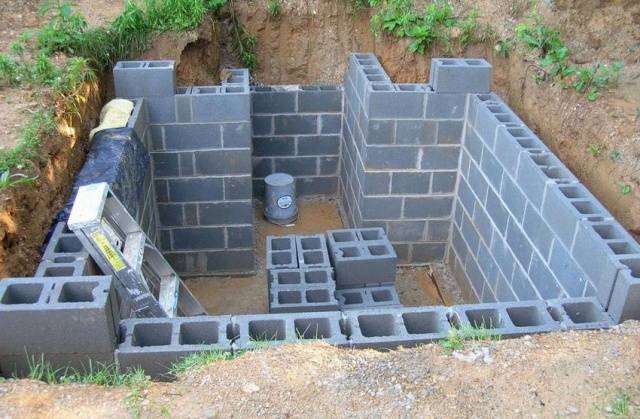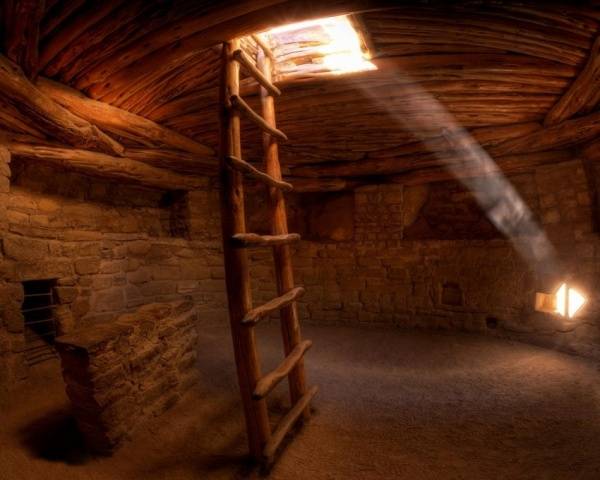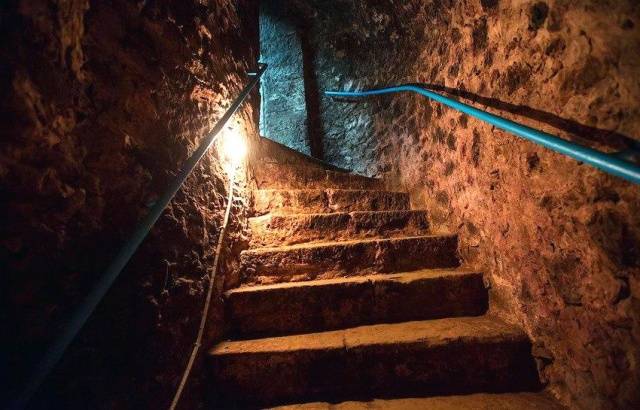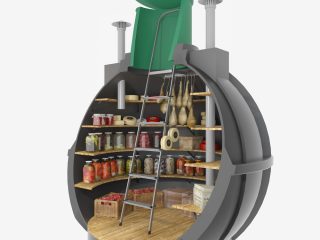Content
It takes a lot of effort to grow a good harvest. However, it is not so easy to preserve vegetables and root crops in the winter if there is no equipped storage in the yard. Now we will look at how to build a cellar at the dacha with our own hands step by step, and also analyze all the nuances of its arrangement.
Types of country cellars
There are three types of cellar. Their diagram is shown in the photo. The choice of one of the types of storage for your site is determined by the location of groundwater. These criteria are used to determine which option is suitable for a summer residence:
- If the groundwater layers are high, only a ground-based type of cellar is built. In such an area it cannot be buried, otherwise there will always be water in the basement.
- For an area with groundwater located at a depth of 2 m, a semi-buried type of storage is chosen. It is undesirable to build a completely buried basement in such conditions, since in the spring there is a possibility of the water level rising.
- If underground layers of water are located deeper than 2 m, then you can safely dig a deep cellar in your summer cottage.To choose the right type of country cellar, you will have to independently conduct research on the site. This should be done in early spring or late autumn. There are various folk methods for determining the depth of groundwater. We will look at one of them:
- In the evening, a ball of wool is placed on clean ground without grass, a raw egg is placed on it, and the whole thing is covered with a clay vessel.
- Further research is carried out in the early morning. If the inner walls of the vessel, the egg and the wool are wet, it means that the groundwater is located high. When only wool pulled moisture under the vessel, it means the water lies low. If the egg, wool and inner walls of the vessel are dry, then you can safely dig a deep cellar. The water in this area lies very deep.
When choosing a storage type, you need to take into account one more important truth. Vegetables and root crops last longer at positive temperatures 5–7OC. Only a deep cellar can provide such conditions.
What to consider when building a country storage facility
To make a cellar at your dacha with your own hands without any problems, take note of a few important recommendations:
- Construction work is carried out only in summer. At this time of year, groundwater goes deep into the ground.
- On a summer cottage, choose the highest place. Even if the groundwater is deep, in a low-lying area the basement will flood when it rains or melts snow.
- In an area with wet soil, a sand and gravel cushion is poured under the above-ground cellar.
- Any type of storage facility must maintain a constant microclimate. To do this, natural ventilation must be provided.
And finally, it should be noted that there is some unpleasant news for the summer resident. If the site is located in a swamp or quicksand, the construction of a cellar will have to be abandoned.
The process of building a cellar on a summer cottage
So, now we will look in detail at how to make a deep-type cellar in a country house. The following instructions cover general construction steps. In each individual case, design elements can be changed.
Pit preparation
The size of the pit is determined by the dimensions of the cellar, plus it is increased by 0.5 m. The reserve is needed for laying out the walls of the storage facility. What size a cellar should be built is a personal matter, and there are no special requirements here. It all depends on the expected amount of stored crop.
First, markings are installed on the site. To do this, wooden stakes are driven into the ground at the corners of the future pit, and a cord is pulled between them. Now the outline of the country storage has emerged, and we can begin the excavation work. First you need to remove all the fertile soil with a shovel. It can be placed on a summer cottage. The lower infertile soil is used as a fill over the storage area, so it is temporarily dumped in a heap to the side. It is easier to dig a pit with an excavator, but for this there must be free access to the work site.
The final step in constructing a pit is leveling the bottom level, as well as thoroughly compacting it.
Bottom arrangement and concrete foundation construction
Sometimes summer residents build a cellar with their own hands at the dacha without necessarily concreting the bottom, but simply pour a cushion of sand and gravel. There are even storage facilities with an earthen bottom. That is, they dug a pit at the dacha, simply compacted the soil, and it turned out to be a floor in the cellar. This can also be done if groundwater in the dacha is nowhere near visible.
If there is a fear of rising layers of groundwater, then the cellar needs waterproofing, on top of which a foundation slab is concreted. To do this, the bottom of the pit is covered with a sand and gravel cushion 150–200 mm thick. Any waterproofing material is spread on top, turning 400 mm of the edges onto the walls. A reinforcing frame is connected from reinforcement rods. It is lifted from the bottom with brick linings. An example of arranging the bottom with waterproofing and a reinforcing frame is shown in the photo.
Next, beacons are installed, and then the entire site is filled with concrete 400 mm thick. The solution is prepared from a mixture of cement and sand in a ratio of 1:3. No work is performed until the foundation has completely hardened.
Wall masonry
When the concrete base has completely hardened, they begin to build the walls of the country storage. You need to take care of waterproofing right away. To do this, the walls of the pit are covered with strips of roofing material. They build a cellar on a summer cottage from red brick, cinder blocks or concrete blocks. Sand-lime brick is not suitable for these purposes, as it decomposes in dampness.
Laying out the walls starts from the corners. To ensure that the masonry is even, measurements are periodically taken with a level and plumb line, and a cord is pulled over each row. The strength of the cellar walls can be increased by embedding steel rods 6 mm thick into the solution every 3-4 rows. It is especially important to do this type of connection at the corners.For masonry, cement or clay mortar is used. In this case, the seam thickness is maintained to a maximum of 12 mm.
Options for making a country basement floor
So, the in-ground cellar for the dacha is already 50% built. The walls of the storage room are ready, now all that remains is to make the ceiling. For general information, we note that the storage can be located under a house, garage or other building. In this case, the buried cellar is covered with beams, the bottom and top are covered with boards, and the void is filled with insulation. The upper cladding in this case will act as the floors of the room. In such a ceiling, a hatch is installed to enter the basement.
If the cellar at the dacha is not located under the building, it can be covered using another technology. For these works you will need to make a wooden frame and then concrete it. The photo below shows the order in which the floor is made:
- An arched roof frame is made from boards with a cross-section of 50x100 mm and plywood 10 mm thick.
- The finished structure is fixed to the walls of the cellar. By the way, in such a storage location it is appropriate to make the entrance not through a hatch, but to install normal doors. To do this, a doorway is provided in one of the walls even during laying. In the photo, the entrance to the country storage can be seen in the center of one of the side walls.
- The finished frame is sheathed with plywood sheets. To make the wood last longer, the entire structure is treated with a protective impregnation. A mesh is knitted from reinforcement on top of the wooden floor and raised with linings made of small blocks. The final result should be the same design as in the photo.
Now all that remains is to fill this structure with concrete and wait until it hardens. The ceiling of the country cellar is ready, and now it needs to be insulated.And for this we will use the infertile soil that remains after digging the pit.
Arrangement of the burial vault and entrance to the vault
The ceiling of the basement is already ready, now it’s time to finish the cellar. First you need to log in. To do this, from the left doorway in the storage box, two walls are laid out of brick, going up. The result is a corridor with a doorway, but already above ground level.
Now you need to make a staircase to go down to the cellar. When using a hatch, the option indicated in the photo with the letter “A” is suitable. That is, for a country basement under the building they use a regular ladder. Under the designation “A-A” there is a diagram of an improved staircase with inclined wide steps. It is suitable for a recessed type of cellar. The letter “B” denotes the diagram of one stage. This staircase can be equipped with handrails.
The doors are made from 25 mm thick boards. A wooden frame is installed in the doorway. Hinges are attached to the side post, and the finished doors are fixed to them.
Next, we only have the burial chamber left. The concrete has hardened, you can start arranging it. It is easier to insulate the ceiling of a storage facility with sheets of expanded polystyrene. However, many summer residents are accustomed to using improvised materials. This means that for our cellar we will use a mixture of clay and straw. But first, the concrete ceiling of the cellar is covered with sheets of waterproofing. A regular roofing material or black film in several layers will do.
The clay is mixed with straw or sawdust, after which the entire concrete floor of the storage facility is tightly covered. It is advisable to apply insulation with a thickness of at least 100 mm. When the clay dries, it is covered on top with sheets of waterproofing. Now you can use the soil left after digging the pit. The entire ceiling of the storage facility is covered with this earth, forming an above-ground burial vault. By the way, it can be used in landscape design. Fertile soil is added to the earthen burial chamber and flowers or ornamental plants are planted. Together with the cellar at the dacha, you will get a beautiful flower bed in the yard.
Interior arrangement of the cellar
So, we looked at how to build a cellar with your own hands on your summer cottage. Now it needs to be arranged inside.
There are several options for arranging the floor inside a country cellar:
- A cellar with an earthen floor is easy to set up and does not require any costs. To make the coating hard, you can compact a layer of crushed stone 10 mm thick into the ground. Earthen floors are suitable for a cellar located on a summer cottage where groundwater lies deep.
- Concrete floors with waterproofing are considered the most reliable. They will 100% protect the cellar from flooding and dampness.
- The clay floor is laid on a layer of waterproofing and gravel cushion 150 mm thick. This is a very reliable coating for a country cellar, but it requires high-quality material and a lot of labor.
- The floors in the country cellar can be laid out with pieces of broken brick. To do this, you first need to pour a sand and gravel cushion 100 mm thick. The gaps between the bricks are filled with raw clay.
- It is better to leave a wooden floor for an above-ground cellar, or use it if there is deep groundwater.The wood must be thoroughly impregnated with protective solutions.
To ensure that food in the cellar is well preserved and there is no dampness, an effective ventilation system is needed. The photo shows diagrams for above-ground and in-depth cellars. Please note that there must be not one air duct, but at least two pipes: supply and exhaust.
Any type of country cellar requires artificial lighting. Due to high humidity, wiring with a double layer of insulation is used, and the light bulbs are hidden under protective caps. It is prohibited to install sockets in the cellar.
The video talks about the construction of the cellar:
Now you have a complete understanding of the steps of building a country cellar. The storage is ready, now all that remains is to install the shelves, and you can bring in canned food or vegetables from the garden.






















